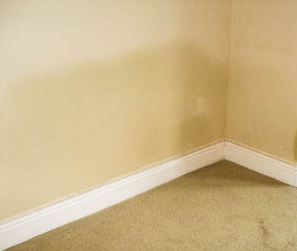The DIY Fix is reader supported. When you buy after clicking a link on our site, we may earn an affiliate commission.
Damp can be a particularly complex and sometimes very confusing issue. Firstly, there are several types of damp: condensation damp, penetrating damp, rising damp… the list goes on. But it’s always worth knowing how much you can expect to pay to deal with damp issues when they occur – and how much, for example, typical rising damp treatment costs are.
Often, there is more than one possible solution to a damp problem in a property. Similarly, it is also sometimes the case that the most expensive treatment isn’t the only, or even best option.

For certain types of damp, there are several things that homeowners can do, either for free or relatively cheaply to address damp issues if they occur, or that can even prevent them happening in the first place. For example, condensation damp can often be sorted out by taking simple actions such as opening windows more often or installing new vents in the kitchen or bathroom. Something as simple as clearing leaves and debris from guttering can help to prevent the onset of penetrating damp.
However, rising damp – although less common – is generally trickier to deal with and more expensive to fix. It can be dealt with yourself, but according to surveys of those that have experienced rising damp problems, only 12% choose to take the DIY route. The vast majority of people call in the professionals. So, how much does rising damp treatment cost?
The costs of rising damp treatment
Of course, it’s very difficult to be exact here – rising damp treatment costs will vary according to the extent of the problem, the size of the property and the method of damp treatment used. Not only will prices depend on a job-to-job basis, location is also a factor too. In London and the South East, where living costs and house prices are higher, everything is higher – and that’s reflected in tradesman’s rates too.
All that said, it is possible to give a rough guide about what rising damp treatment costs might be. There are various trade price comparison websites available that can be useful as an indicator on a local level about prices. Which? also work with the Royal Institution of Chartered Surveyors to produce annual average building work and repair prices.
The figures we are dealing with here were accurate as of April 2016, and are based on average costs of damp treatments based on the type of property: terraced, semi-detached and detached. They also indicate the costs of treating a specific area, for example, one wall.
Damaged or non-existent DPC treatment costs
The most common cause of rising damp is because there is no DPC (Damp Proof Course) in a property, or it has become damaged and is failing. The average price for an injected damp proofing with silicone along one wall are as follows: terraced house -£465; semi-detached – £720; detached – £1,390.
If injectable silicone damp proofing is required across the whole property, the average costs are: terraced house – £885; semi-detached – £2,030; detached – £4,630.
A cheaper option would be to insert a new DPC. For one wall, average costs go from £270-£590. Across an entire property, costs would be £365-£2040.
Ground level above DPC
To ensure that the ground level is at least 15cm below an existing DPC, excavating soil is an option. To do this along one wall, average costs range from £195 for a terraced property to £440 for a detached house. Costs will roughly double if soil excavation is carried out around the entire property.
Blocked cavities
Average costs of clearing blocked cavities to ensure that external damp does not reach inner walls range from £130 to treat one area, £185 for three areas to £230 for five areas. Prices double, on average, if the areas are more than three metres above ground level.
Insufficient damp proofing
Inserting a new DPC where there is a specific weakness in a wall typically costs £165 for a one metre wall to £340 for a five metre wall.
It’s important to remember that these prices are national averages. Rising damp treatment costs will obviously vary on the size of the job, the house and the treatment required, but these figures should give you an indicator of the likely costs that might be involved.




